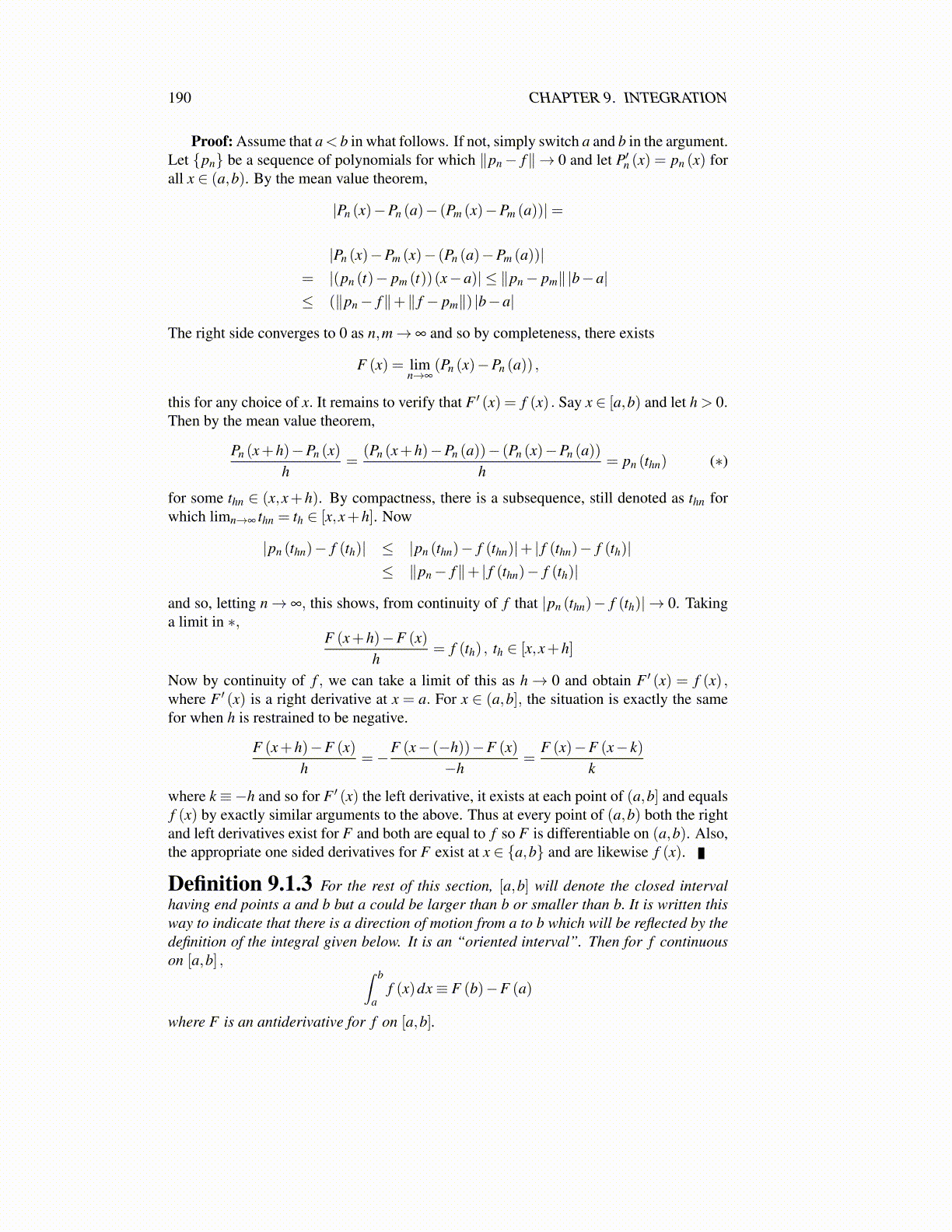
190 CHAPTER 9. INTEGRATION
If f ≥ 0,a < b, then the mean value theorem implies that for F ′ = f , and some
t ∈ (a,b) ,F (b)−F (a) =∫ b
af dx = f (t)(b−a)≥ 0.
Thus∫ b
a (| f |− f )dx≥ 0,∫ b
a (| f |+ f )dx≥ 0 so∫ b
a | f |dx≥∫ b
a f dx and∫ b
a | f |dx≥−∫ b
a f dx
and so this proves∣∣∣∫ b
a f dx∣∣∣≤ ∫ b
a | f |dx. This, along with part 2 implies the other claim that∣∣∣∫ ba f dx
∣∣∣≤ ∣∣∣∫ ba | f |dx
∣∣∣ even if a > b.The last claim is obvious because an antiderivative of 1 is F (x) = x.Note also that the usual change of variables theorem from elementary calculus is avail-
able because, by the chain rule, if F ′ = f , then f (g(x))g′ (x) = ddx F (g(x)) so that, from
the above proposition,
F (g(b))−F (g(a)) =∫ g(b)
g(a)f (y)dy =
∫ b
af (g(x))g′ (x)dx.
We usually let y = g(x) and dy = g′ (x)dx and then change the limits as indicated above,or equivalently we massage the expression to look like the above. Integration by parts alsofollows from differentiation rules.
Also notice that, by considering real and imaginary parts, you can define the integral ofa complex valued continuous function∫ b
af (t)dt ≡
∫ b
aRe f (t)dt + i
∫ b
aIm f (t)dt
and that the change of variables formula just described would hold. Just apply the aboveto the real and imaginary parts. Similarly, you could consider continuous functions withvalues in Rp by considering the component functions.
Definition 9.1.6 A function f : [a,b] → R is piecewise continuous if there is anordered list of intermediate points zi having an order consistent with
[a,b] , (zi− zi−1)(b−a)> 0
a = z0,z1, · · · ,zn = b, called a partition of [a,b] , and functions fi continuous on [zi−1,zi]such that f = fi on (zi−1,zi). For f piecewise continuous, define∫ b
af (t)dt ≡
n
∑i=1
∫ zi
zi−1
fi (s)ds
Observation 9.1.7 Note that this defines the integral when the function has finitelymany discontinuities and that changing the value of the function at finitely many pointsdoes not affect the integral.
Of course this gives what appears to be a new definition because if f is continuous on[a,b] , then it is piecewise continuous for any such partition. However, it gives the sameanswer because, from this new definition,∫ b
af (t)dt =
n
∑i=1
(F (zi)−F (zi−1)) = F (b)−F (a)